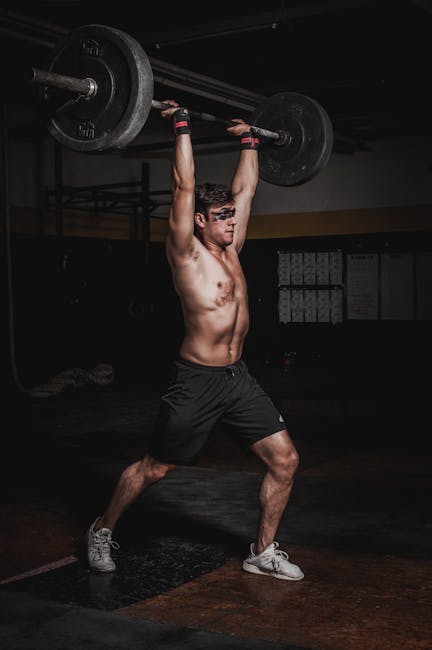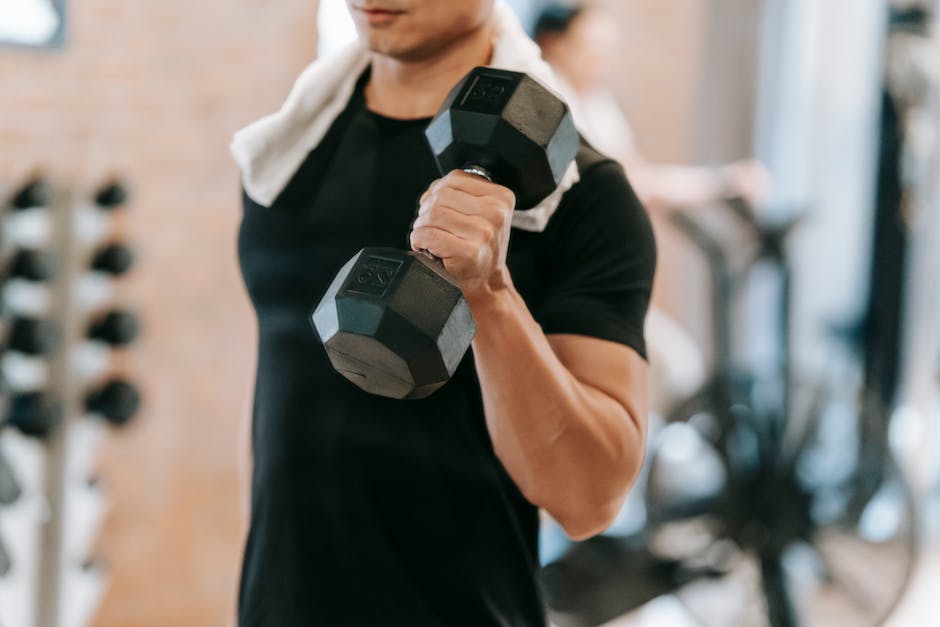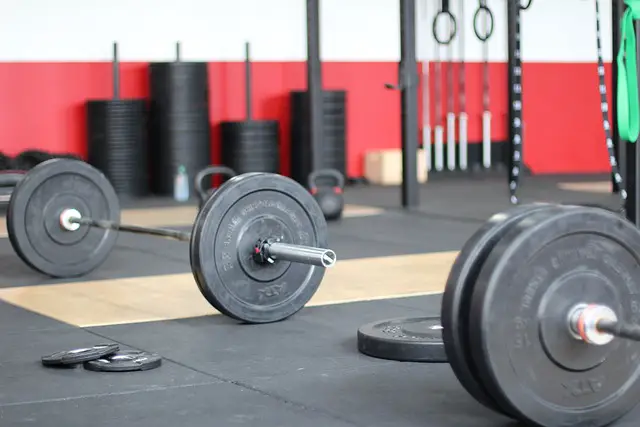If your elbow is feeling numb from heavy weight lifting, congratulations! You’re on your way to becoming an honorary member of the “No Pain, No Gain” club. But before you flex those guns and chalk up your hands, it’s worth taking a closer look at how heavy lifting can affect your elbow. From elbow pain to tennis elbow to elbow envy (yes, it’s a thing), we’re diving deep into the effects of heavy weight lifting on this oft-forgotten joint. Warning: reading this article may cause an overwhelming desire to do elbow curls.
Contents
- 1 1. Introduction: Understanding the Significance of Elbow Health in Heavy Weight Lifting
- 2 2. The Elbow Joint and its Anatomy: A Comprehensive Overview
- 3 3. Impact of Heavy Weight Lifting on Elbow Tendons and Muscles
- 4 4. Risk Factors of Elbow Injuries in Heavy Weight Lifting: Prevention and Management
- 5 5. A Holistic Approach to Elbow Health: Optimizing Your Heavy Weight Lifting Regimen
- 6 In Summation: Don’t Skip Leg Day!
1. Introduction: Understanding the Significance of Elbow Health in Heavy Weight Lifting
Are you tired of feeling like a T-rex after every heavy lifting session? Does it seem like your arms just can’t handle the weight of the world (or even just a heavy barbell)? Look no further! Improving your elbow health is the key to unlocking your true lifting potential and preventing those pesky injuries from occurring.
Let’s face it, elbows aren’t the most exciting body part to think about. But trust me, they play a crucial role in your lifting technique. Whether you’re doing bicep curls or deadlifts, your elbows are constantly under stress and strain. Neglecting their health can lead to painful conditions such as tennis elbow or golfer’s elbow. And let’s be honest, no one wants to be the person at the gym with a giant elbow brace.
But fear not! There are plenty of simple exercises and techniques you can incorporate into your training to ensure your elbows stay in tip-top shape. From stretching to foam rolling, from using proper form to taking rest days, there are plenty of ways to improve your elbow health. And hey, who knows? Maybe you’ll even start to love those little joints you used to ignore.
2. The Elbow Joint and its Anatomy: A Comprehensive Overview
Here’s everything you need to know about the elbow joint and its anatomy:
Let’s start with the basics: the elbow joint is the joint that connects the upper arm bone (the humerus) to the two forearm bones (the radius and ulna). It’s kind of like a hinge that allows your arm to bend and straighten, so you can wave hello to your adoring fans or push your significant other away when they try to steal your fries.
But wait, there’s more! The elbow joint also has a bunch of other important structures lurking around, including ligaments, tendons, and a little something called the olecranon process. Don’t worry, it’s not a weird alien organ – it’s just a bony projection that sticks out at the back of your elbow. Think of it like a built-in handle that you can use to open doors, carry bags, or karate chop anyone who tries to mess with you.
- Fun fact: the elbow joint is one of the most common places to get injured in sports like baseball, tennis, and golf. So if you’re planning on becoming the next Serena Williams or Tiger Woods, make sure you stretch and warm up properly!
- Another fun fact: some people can actually dislocate their elbow joint, which means the bones get jostled out of place. Eek! But luckily, most of the time it’s not too serious and can be fixed with a little popping and locking (not the dance move).
Now that you’re a bonafide elbow joint expert, go ahead and impress your friends with your newfound knowledge. Just don’t get too carried away and accidentally elbow them in the face – trust us, it’s not a good look.
3. Impact of Heavy Weight Lifting on Elbow Tendons and Muscles
So, you’ve been lifting heavy weights for quite some time now, haven’t you? Well, imagine yourself as the superhero of weights, lifting those iron gods high and mighty, but wait! Have you ever noticed that sharp pain in your elbow? No worries, it’s not your superhero badge, it’s just your elbow tendon yelling for some attention.
Heavy weightlifting can cause various types of strains on your tendons, leading to injuries like tendinitis or tennis elbow. The mechanism of action behind these injuries is quite simple, actually. Lifting heavy weights repeatedly creates micro-tears in your tendons, which then heal by forming scar tissue. This scar tissue is relatively weaker than your original tendon and is more prone to injury. So, if you keep on with your superhero personality, your elbow is going to have its own villain – Tendinitis the Terrible.
But don’t worry, tendon injuries are avoidable if you take care of your elbows. Just like your car, your elbows need regular maintenance, even more so since they carry heavy weights around. So, here are some tips to keep your elbows happy and keep you lifting those iron gods without worry.
- Warm-Up: Don’t start lifting without warming up your elbow muscles. Some gentle elbow rotations or practicing your favorite superhero pose can do the trick.
- Stretch: Give your elbows a good stretch before and after lifting. And no, we are not talking about stretching your arms to reach out for that pizza box. Try triceps and biceps stretches instead.
- Correct Form: Using correct form while lifting ensures that your muscles and tendons are working as intended. Otherwise, you might end up with a new superhero name, courtesy of Tendinitis the Terrible.
4. Risk Factors of Elbow Injuries in Heavy Weight Lifting: Prevention and Management
Oh, heavy weight lifting! The ultimate test of strength and endurance. But with great power comes great responsibility. And by responsibility, we mean taking care of your elbows lest they snap in half like a twig. Here are some of the risk factors of elbow injuries in weightlifting:
- Improper Form: Not only does bad form make you look like a newborn giraffe trying to walk, but it also puts undue stress on your elbows. Make sure to keep your elbows tucked in and your core tight.
- Overuse: If you’re lifting weights every day like it’s your day job, then your elbows are going to need some time off. Give them some much-needed rest 2-3 days a week.
- Too Much Weight: We know you can lift that car over your head, but should you? Unless you want to add “elbow fracture” to your resume, stick to weights that challenge you but don’t push you to the brink.
Now that you know what the risk factors are, it’s time to talk about prevention and management. Because let’s face it, nobody wants to be elbow-less. Here are some tips:
- Warm-Up: Just like you wouldn’t run a marathon without stretching, you shouldn’t lift weights without warming up first. A few minutes of stretching and gentle movements will get your blood flowing and your joints limber.
- Start Small: Rome wasn’t built in a day, and neither was your bicep. Start with smaller weights and work your way up. Your elbows will thank you.
- Listen to Your Body: Your body is a temple, so treat it like one. If you’re feeling pain in your elbows, stop what you’re doing and take a break. It’s better to rest now than have to deal with a serious injury later.
So there you have it, folks. Elbow injuries are no joke, but with a little bit of common sense and some preventative measures, you can continue throwing around iron like it’s nobody’s business. Just remember to take care of those elbows, or you might wind up looking like a T-Rex with tiny, useless arms and no elbow joints. Nobody wants that.
5. A Holistic Approach to Elbow Health: Optimizing Your Heavy Weight Lifting Regimen
If you’re someone who’s heavy into weightlifting, you probably know how common elbow injuries can be. But fear not! Incorporating a few simple changes into your lifting routine can help optimize your elbow health and keep those pesky injuries at bay.
First off, make sure you’re not overdoing it with the weight. Yeah, yeah, we know – you want to impress everyone with your massive biceps and triceps. But lifting too heavy too quickly can put a ton of strain on your elbow joints and cause long-term damage. So, start with lighter weights and gradually work your way up to heavier ones. Trust us, your elbows will thank you.
Next, don’t forget about proper form. We get it – it’s easy to get caught up in the moment and forget about proper technique. But sloppy form not only decreases the effectiveness of your lifts, but it also increases your risk of injury. So, focus on keeping your elbows close to your sides, maintaining proper posture, and engaging your core. And don’t forget to breathe!
Finally, don’t neglect other areas of your body. The elbow might seem like the star of the show, but in reality, it’s just one part of your overall physique. Make sure you’re also incorporating exercises that engage your shoulders, back, chest, and legs, as all of these muscles work together to help you lift like a boss. Plus, mixing it up with different types of exercises can help prevent overuse injuries and keep your workouts interesting.
So there you have it – a few simple changes that can help optimize your elbow health and keep you lifting like a pro. Now go crush those gains!
In Summation: Don’t Skip Leg Day!
Well, folks, we’ve talked a lot about how heavy weightlifting affects the elbow. But we’re forgetting something really important here. What about those chicken legs? Yeah, that’s right. You can have the strongest arms in the world, but if your legs are wobbly, you’re setting yourself up for failure.
So, remember to balance out your workouts and not skip leg day! Your elbows will thank you, but more importantly, you won’t be stuck with the nickname “T-Rex Arms” forever.








Leave A Comment